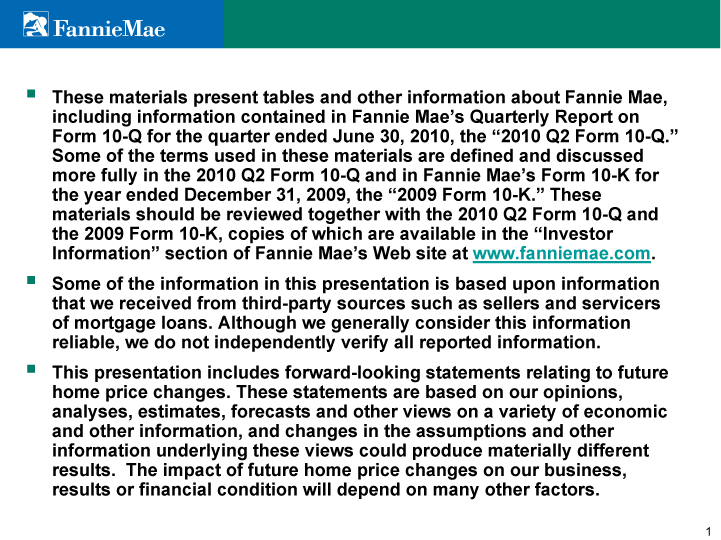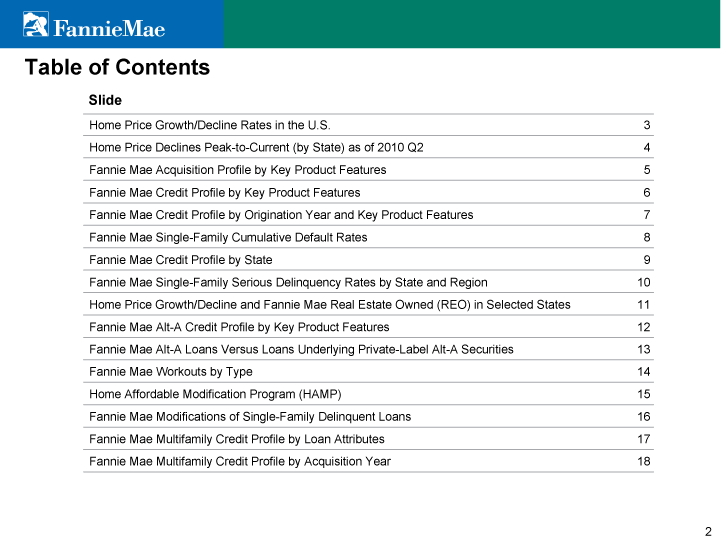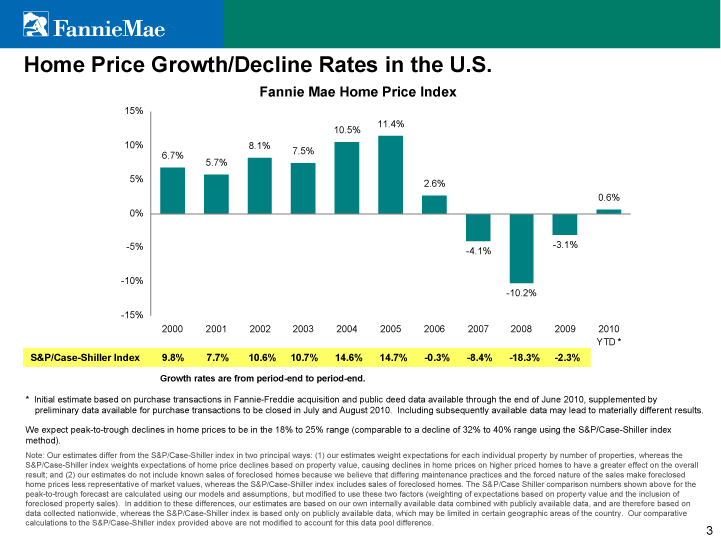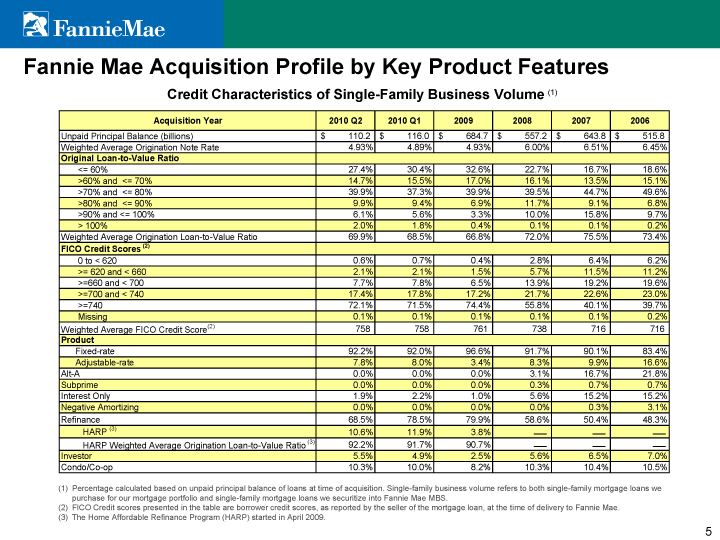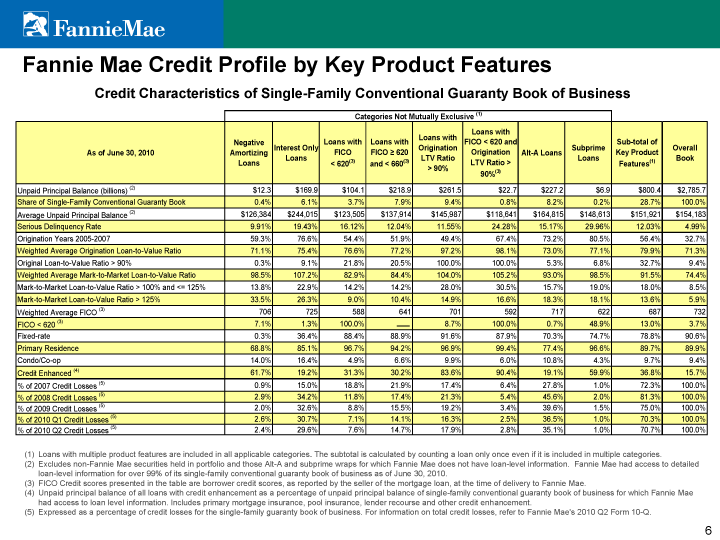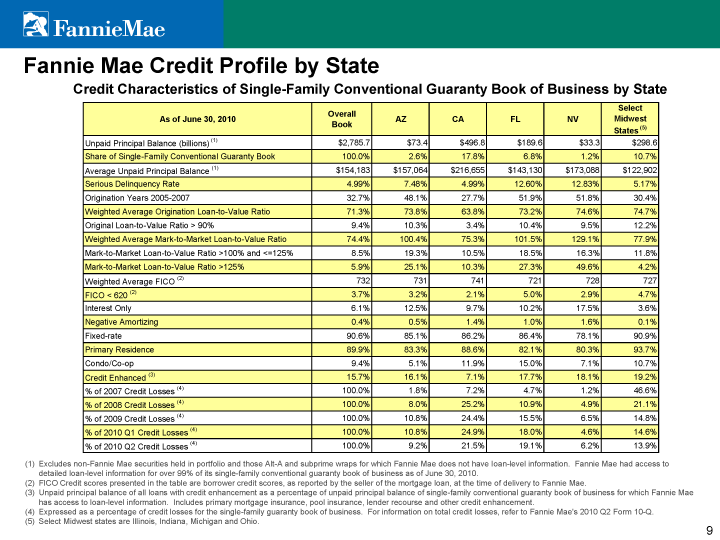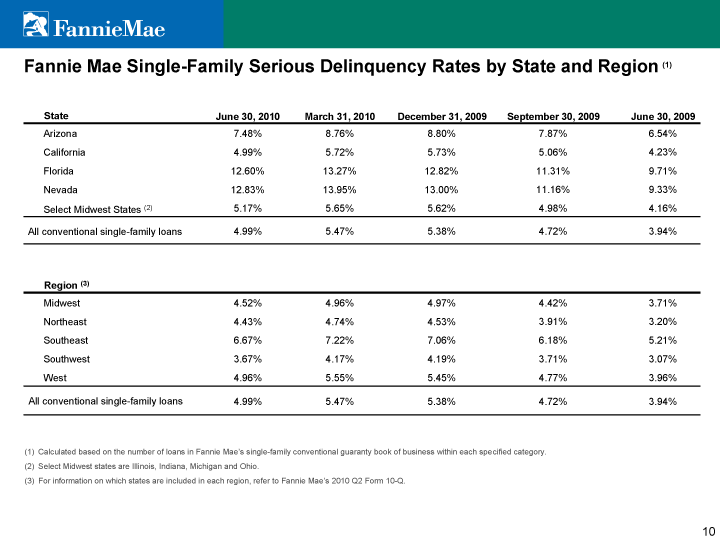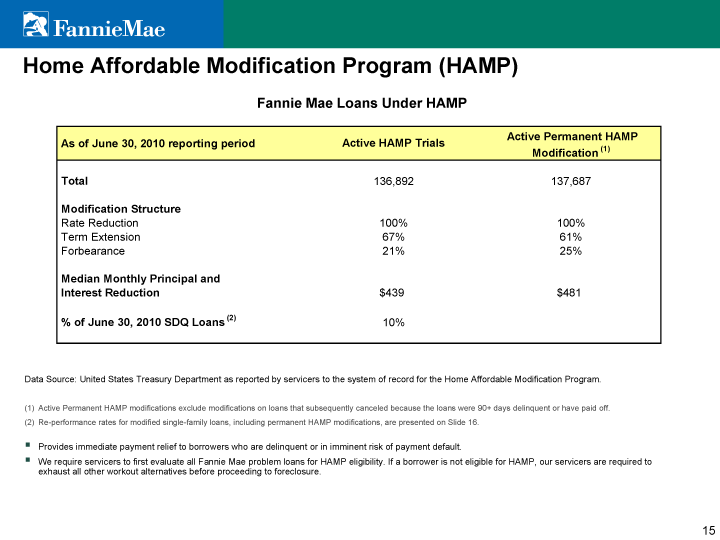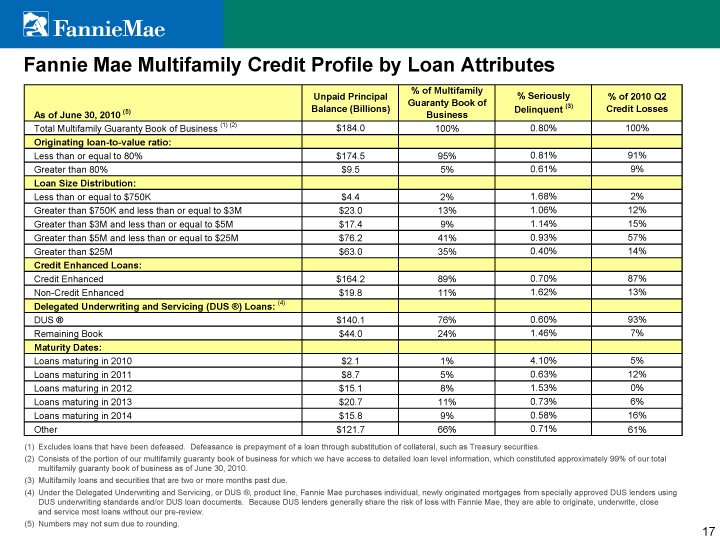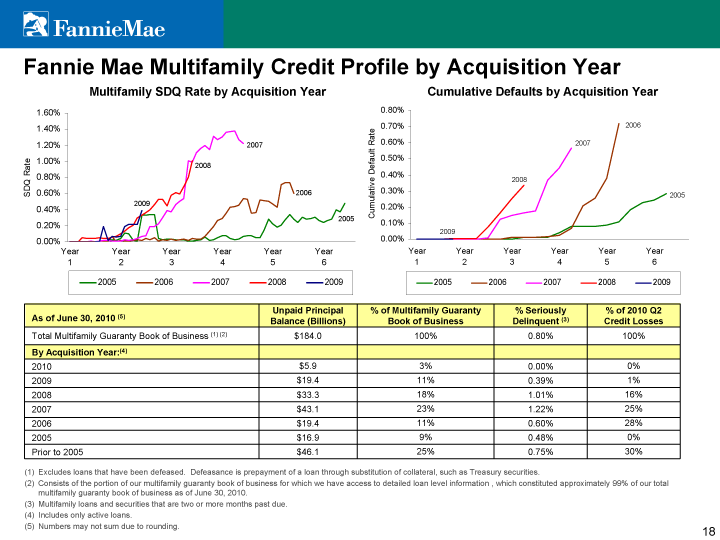Free signup for more
- Track your favorite companies
- Receive email alerts for new filings
- Personalized dashboard of news and more
- Access all data and search results
Filing tables
Filing exhibits
FNMA similar filings
- 3 Jan 11 Other Events
- 16 Nov 10 Departure of Directors or Certain Officers
- 5 Nov 10 Fannie Mae Reports Third-Quarter 2010 Results
- 5 Aug 10 Fannie Mae Reports Second-Quarter 2010 Results
- 16 Jun 10 Notice of Delisting or Failure to Satisfy a Continued Listing Rule or Standard
- 20 May 10 Departure of Directors or Certain Officers
- 10 May 10 Fannie Mae Reports First-Quarter 2010 Results
Filing view
External links

